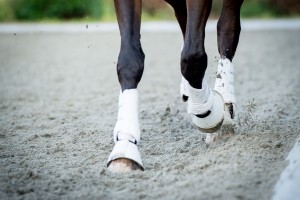Pet therapy has grown very popular in the past few years. Even college campuses have taken to bringing puppies to destress riddled students during final exams week! Therapy dogs are sweeping the nation and our social feeds with adorable pictures of the amazing emotional (and even physical) healing brought to patients by man’s best friend. The newer form of pet therapy that is starting to gain some real recognition has a much larger form of companionship.

34850445 – girl riding a horse on nature
Hippotherapy
Literally meaning “treatment with the help of a horse”, was recently featured in a New York Times article for the incredible relief it brings to those who seek it. The article focuses Alex Brock, a 22 year old whom has microcephaly and cerebral palsy, as well as Jack Foster, a three year old who also has cerebral palsy.
Equine-assisted therapy is a treatment option for physical therapy, occupational therapy, and even speech therapy (though it is not meant to replace other commonly used therapies). As with other pet therapies, the interaction with the animal has proven to provide emotional support, but horse therapy’s most unique provision comes from the gate of the animal.

31855240 – closeup of the hooves from a horse while in trot on an outside track
The horse’s movement is a repetitive gentle motion that engages the rider’s core. With each step (about 100 steps per minute) the rider is experiences a push forward and backward that the body has to counteract. The extension of posture from riding the horse prompts the rider to use their hip and thigh muscles to stay on the horse. This has shown to help riders who suffer from spinal injuries and the featured rider, Jack Foster, gains strength in his neck and trunk from the intensive movement exercise.
When explained in detail how the exercise is effective, it sounds like a lot of hard work. In reality, most kids don’t even realize they are doing therapy. Adults can also get lost in the enjoyable experience.
If safety is a question, allow this to put your mind at ease. Some of the therapy horses take the nickname “bomb horses” as they are so well trained that they would retain their docile temperament even in the event of an explosion. Their lack of reaction allows for riders with more debilitating physical and mental conditions to have the opportunity seek hippotherapy.
Making Strides
Not only is the experience therapeutic for the rider, but it gives a lot of hope to the caregivers as well. Not only are the rider’s taking physical and emotional strides, but they also are taking strides toward independence. Check equestrian off the list of things people with disabilities aren’t able to be, because adaptive riding has made it achievable.
For more information on horse assisted therapy go to: americanhippotherapyassociation.org
